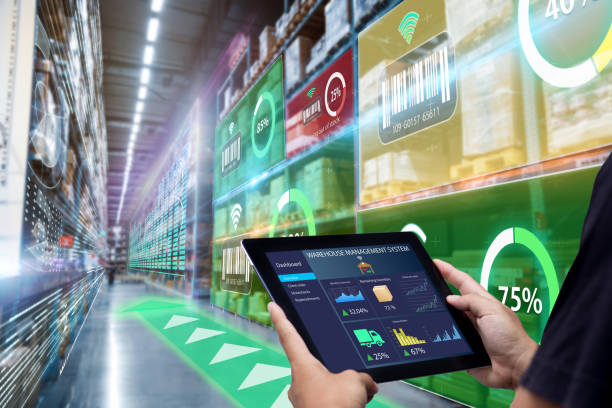
Have you ever attended a hospital and felt as though you had entered a maze meant to try your patience? We’ve all been there, ugh. You’re nervous, rushing late, and all of a sudden you’re lost between cardiology and radiology. For this reason, hospital navigation solutions are becoming increasingly important. And what was once perplexing is now receiving a significant makeover because of technology.
Let’s talk about how technology is revolutionizing hospital navigation, making it quicker, easier, and, to be honest, far less stressful.
Interactive Kiosks That Are Quite Beneficial
Do you recall the old “You Are Here” maps? Yes, the ones that left you even more perplexed. Digital kiosks with touchscreens, language options, and step-by-step instructions are being installed in hospitals today. Entering “Lab” or “Pediatrics” will literally display the quickest path; occasionally, it may even print or send directions to your phone. It’s similar to having a little personal assistant at the door. And let’s face it, that’s a lifesaver in a location that might feel overwhelming.
Your Indoor GPS with Mobile Apps
With the use of app for indoor positioning systems, several hospitals have gone all “tech-savvy.” Imagine it as indoor Google Maps. Without any guesswork or wondering, the app will direct you from the lobby to your appointment once you park your car and launch it. To determine your precise location, some apps use Bluetooth beacons, Wi-Fi triangulation, or even ultra-wideband technology. To be honest, the accuracy of these things is nearly amazing.
AR Navigation: Friendly yet Futuristic
Video games are no longer the only use for augmented reality. You may now see bright arrows directing you through halls in certain hospitals by holding up your phone. It seems as though the building itself is whispering directions with digital arrows pointing to the cafeteria and floating placards over elevators. For a hospital, it’s surprisingly entertaining, and it’s really intuitive, especially for someone with a bad sense of direction like me.
Adaptive Smart Signage
Static signs are acceptable, but what about during construction, when elevators are crowded, or when hallways are blocked? Let’s introduce intelligent digital signage. Depending on appointments, crowds, or crises, these displays are updated in real time. Some can even emphasize particular information, reroute patients, or display wait times. To put it another way, they don’t just sit there like a poster; they think with you.
Voice-Activated Direction
Are your hands full? With children? Having paperwork in one hand and coffee in the other? Navigation that is voice-activated can be quite helpful. “Where is the closest bathroom?” or “How do I get to oncology?” and receive given instructions right away. Ideal for accessibility as well, since everyone should be able to navigate without undue effort.
Positioning Indoors Using Beacons
Beacons are small Bluetooth gadgets that are concealed all over the facility. To give you exact directions, they connect to your phone or a hospital app. When a patient arrives, some systems even alert the staff. When you combine it with an app for an interior positioning system, you have an almost flawless navigation system that keeps everyone on course.
Navigation with NFC and QR Codes
It’s acceptable that not all hospitals have the funds for beacons or AR. Solutions based on NFC and QR codes are easy to use and efficient. A map appears when you tap your phone on a sticker or scan a QR code. It is inexpensive, simple to use, and surprisingly dependable. Simple is all you need sometimes.
3D Maps: A Clear View of the Hospital
Until you’re on a different floor, require stairs, or wish to avoid the busy elevator, 2D maps are OK. This is resolved with 3D maps, which display several floors, corridors, and significant features in a single dynamic view. Explore a scaled-down replica of the hospital by rotating, zooming, and planning your path. I promise you that this will improve your life if you struggle with direction.
Portals for Integrated Patients
Currently, some hospitals integrate navigation with their patient portals. The same app may be used to check in, view your appointment, and receive customized directions. “Room 405 is where you have an appointment. Would you like the lobby to give you directions? Yes, please. decreases stress, saves time, and creates a coherent healthcare experience.
Avoiding the Crowds with Predictive Routing
At last, real-time adaptation is now possible for certain systems. Overcrowded hallways? Delays in the elevator? You are automatically redirected by the app. Some can even pick up on your preferences, such as avoiding noisy hallways or stairs. It’s like to having a small hospital friend watch out for you.
The Significance of This
The truth is that wayfinding is more than just figuring out where you’re going. Stress, time management, and the general patient experience are all impacted. In addition to being irritated, a lost guest is also worried, agitated, and preoccupied. Investing in hospital wayfinding solutions helps hospitals lower stress, increase productivity, and even make life easier for their employees.
And let’s be honest, anyone who has ever walked down a hospital hallway knows that a little direction can go a long way.
Concluding remarks
Thanks to technology, hospitals are becoming less daunting labyrinths and more approachable, friendly, and welcome places. Every new solution, whether it is voice guidance, AR, kiosks, or apps for indoor positioning systems, makes life easier for staff, patients, and guests.
Because when someone is already anxious, ill, or agitated, they shouldn’t feel adrift. Additionally, navigating a hospital could become enjoyable with the correct navigation solutions. Yes, I did say that. Nice.